Audio
Beyoncé just released her 5th studio album on iTunes, it’s 14 tracks long and comes with a music video for each of them
17K notes
·
View notes
Photo



"We teach girls to shrink themselves to make themselves smaller. We say to girls, ‘You can have ambition but not too much. You should aim to be successful but not too successful otherwise you will threaten the man.’ Because I am female I am expected to aspire to marriage. I am expected to make my life choices always keeping in mind that marriage is the most important. A marriage can be a source of joy and love and mutual support, but why do we teach girls to aspire to marriage and we don’t teach boys the same? We raise girls to see each other as competitors, not for jobs or for accomplishments, which I think can be a good thing, but for the attention of men. We teach girls that they can not be sexual beings in the way that boys are. Feminist: A person who believes in the social, political and economic equality of the sexes."
***Flawless - Beyoncé ft Chimamanda Ngozi Adichie
20K notes
·
View notes
Quote
May Day rallies in Bangladesh have taken on an added significance as workers marched through the streets to demand improved safety standards after the deaths of more than 400 people after a building collapsed near Dhaka.
Bangladesh factory-collapse toll passes 400 | Al Jazeera English (via theamericanbear)
Why we need International building guidelines and enforced regulations to prevent atrocities like these.
Not only is this event an outcome of the often overlooked working infrastructure but also throws a light on the exploitive practices of the neo-liberalist capitalist system.
57 notes
·
View notes
Quote
Writing and reading decrease our sense of isolation. They deepen and widen and expand our sense of life: they feed the soul. When writers make us shake our heads with the exactness of their prose and their truths, and even make us laugh about ourselves or life, our buoyancy is restored. We are given a shot at dancing with, or at least clapping along with, the absurdity of life, instead of being squashed by it over and over again. It’s like singing on a boat during a terrible storm at sea. You can’t stop the raging storm, but singing can change the hearts and spirits of the people who are together on that ship.
Anne Lamott, Bird by Bird: Some Instructions on Writing and Life (via excessivebookshelf)
4K notes
·
View notes
Photo
I have always been a fan of Frank Lloyd Wright and this news is pretty devastating not as simply an admirer of his work but an aspiring architect as well. Buildings store history as a reflection of the times and the complete destruction of the Imperial Hotel resonates with the current modernization of buildings. However as we segway into a new culture of urbanization, there should still be a need to hold on to the past as a form of reclamation and identity. Frank Lloyd Wright's works are diverse and plenty, however the Imperial Hotel represents his ability to provide for cross-cultural resolutions to architectural problems. It's really disappointing to find that they respect that they once held especially in relation to its significance in Japan can be completely obliterated in order to make for the "new". Shouldn't the new be questioned? Or can we go about "razing" the world without any afterthoughts?
Despite it already having been razed in 1968, its interesting to note how dominant such a practice is in our world today.
Other destroyed FLW buildings can be seen at the following link:
http://www.mnn.com/your-home/remodeling-design/photos/6-destroyed-frank-lloyd-wright-buildings/the-imperial-hotel
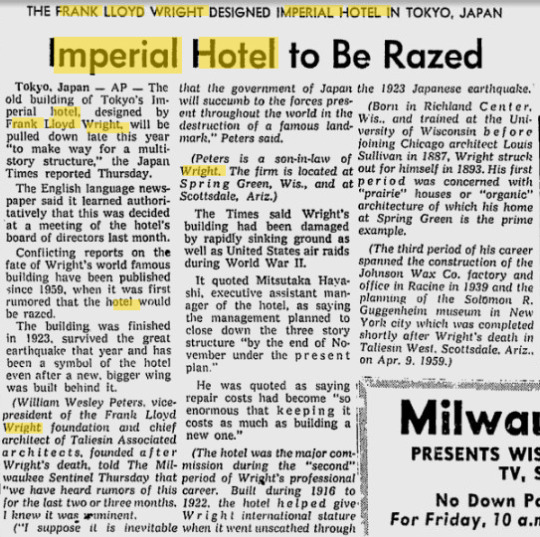
25 notes
·
View notes
Photo
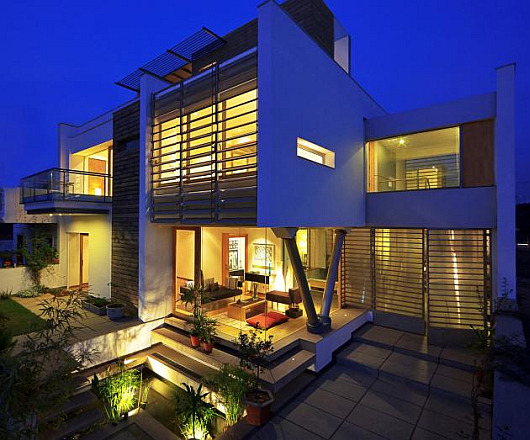
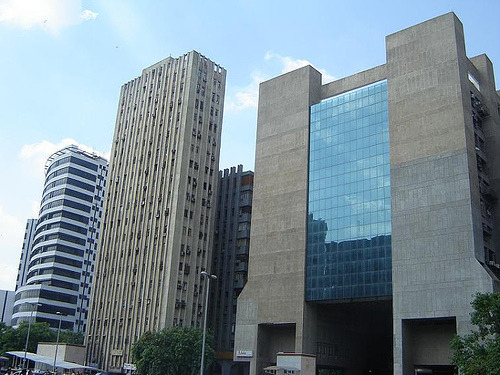
Examples of modern architecture in India. Are these local solutions to architectural problems? No, the most significant problem of modern architecture is its appropriation of Western ideals of modernity and advancement which don't completely solve or apply to regions such as India.
0 notes
Photo

Psychometric Chart for New Delhi - Instability Region
Displayed here is a psychometric chart of New Delhi, India over the course of a year. While the temperature displayed reveals how hot it gets (upto 40 C) during the summer, it is not completely humid. The saturation line is the curved line on the chart that measures the moisture content in the air.
0 notes
Photo
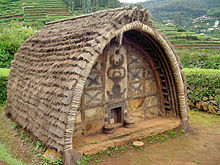

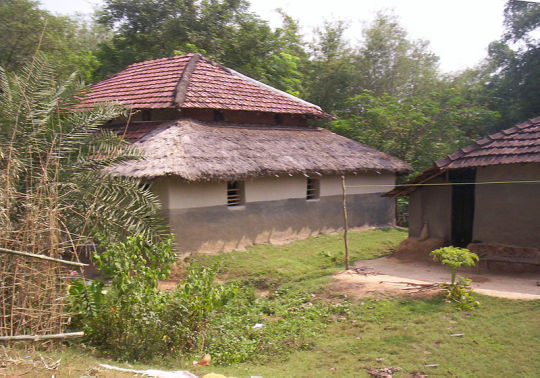
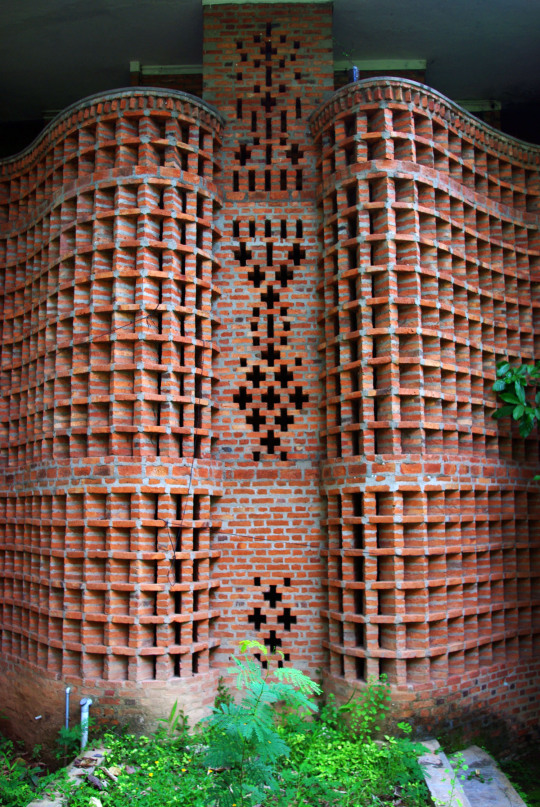
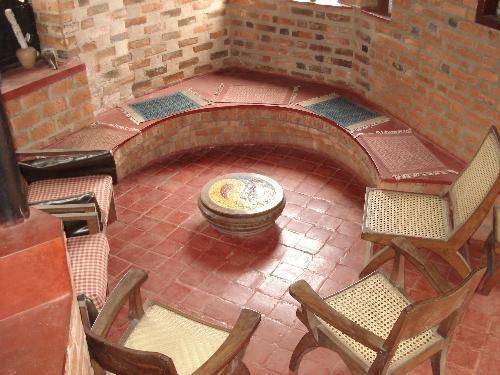
Vernacular Indian Architecture
Today, I was looking through sources of vernacular indian architecture. As India is located in an instability climate zone during the summer (low pressure, mid-high temperature) this explains the vernacular architecture of the region. The brick and concrete allow the heat to remain outside, while also keeping it cool inside. The ventilation is done through techniques such as removing a brick in each section of the building to allow the hot air to rise up and pass through.
Overall, I find this investigation of indian architecture intriguing as it explains how local architecture allows to solve for the problems presented by nature.
0 notes
Text
Vernacular Indian Architecture
Building material depends on location. In hilly country where rocky rubble, ashlar, and pieces of stone are available, these can be patched together with a mud mortar to form walls. Finer stonework veneer covers the outside. Sometimes wood beams and rafters are used with slate tiles for roofing if available. Houses on hills usually have two stories, with the livestock living on the ground floor. Often a verandah runs along the side of the house. The roof is pitched to deal with the monsoon season and the house may sit on raised plinths or bamboo poles to cope with floods.
On the flat lands, abodes are usually made of mud or sun-baked bricks, then plastered inside and out, sometimes with mud mixed with hay or even cow dung and whitewashed with lime.
Where bamboo is available (mainly in the north and northeastern states) it is widely used for all parts of the home as it is flexible and resilient. Also widely used is thatch from plants such as elephant grass, paddy, and coconut. In the south, clay tiles are used for pukka roofing while various plant material such as coconut palm is common for kachcha.
(Source: Wikipedia)
0 notes
Photo
Something about this photo I find incredibly inspirational.

hiro, luxury earring, 1969
3K notes
·
View notes
Text
Journal Entry 14: A "sustainable city" in Masdar

http://www.nytimes.com/2010/09/26/arts/design/26masdar.html?pagewanted=2&_r=0
I recently read an article in the New York Times that brought into my attention the problem with gated communities. The sustainable city of Masdar located in Abu Dhabi, really revolted me. While it is a "sustainable city" that seeks to be the world's first zero-carbon city, it begs the question: is this truly sustainable or simply a guise?
Boasting of features such as electric cars, dependence on solar energy, a marrying of local and "modern architecture", this society is located on the outskirts of Abu Dhabi - in a walled off society limited to the elite (2% of the population).
As mentioned by the author, Masdar is simply a mini-utopia that has no connection to the realities of the world. In fact, in creating a utopian society, its sustainability is undermind as the community exists of a homogenous population that is "lifted on a pedestal and outside the reach of most of the world’s citizens."
It is urban planning projects like these that bother me. Sequestering residents to self-contained, access-restricted enclaves solely serves the purpose of exacerbating the division of our society. This manner of exclusionary practices is like covering up a landfill - the problems still exist, but the burial of them screams ignorance.
We have come to a pivotal point in our history where a social upheaval on these matters is required. We need a commitment to develop neighborhoods and communities that are racially and economically integrated, safe, and connected to the larger society.
While the urban plan of such a city leads to sustainable practices (although in its making it there is great ecological destruction), such societies need to be squashed for what they represent: the fortress mentality, or the seclusion of the elite to a "utopian community" completely disconnected from reality.
From another article I read I found this great insight:
In Europe, the concept of "slow streets" has taken hold to reduce traffic and increase livability. These streets are narrowed, curved, and landscaped to make them pedestrian-friendly and to reduce automobile speeds to a crawl. The residential streets become a sort of community courtyard, where children can play, adults interact, and everyone can keep an eye on the street for suspicious or dangerous activity.
http://www.asu.edu/courses/aph294/total-readings/blakely%20--%20dividedwefall.pdf
0 notes
Photo
Journal Entry 12.5
Natural solutions

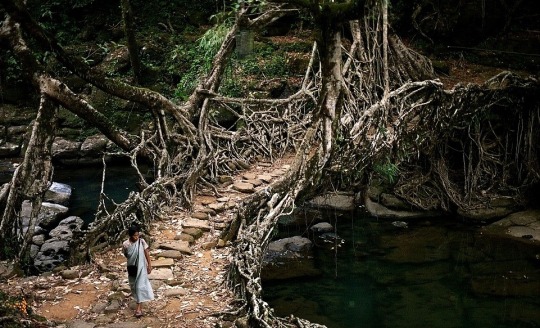
92K notes
·
View notes
Text
Journal Entry 12: Time Vandalism with Nandan Ghiya
Today I came across an Indian artist today by the name of Nandan Ghiya who brought into light the significance of the constant bombardment of images and information in our current world. In the following piece from his series called "deFacebook" he exposes the internet agers fundamental problem: the desensitization that we have faced - to the point of disillusion. Digital work do not allow for the preservation of art and ideas unlike "old pictures that allow for different associations for different people" where in each layer dreams, promises, ambitions are sealed with the chip of paint and the change in the rustic texture.
The below piece reveals this strange transition, in which Nandan digitally manipulates rustic portraits to expose the lack of significant connection that is made.

I personally found Nandan's artwork really interesting and highly representative of the apathy of our generation. The constant bombardment of images, news, and deals ("released just now", "for the first time!") reveals our current deplorable condition where we barely hold significant connections to our possessions. While digital art has allowed for easier access and connections to others, this artwork speaks volumes for the desensitization that it does create.
0 notes
Text
Journal Entry 11: Ethnic Indian architecture - Laurie Baker
Again on my quest to find Indian architects who follow/abide to native architecture of India, I came across Laurie Baker. A British-born Indian architect, Baker went to India in 1945 and then became an Indian citizen due to his prolonged stay. His stay in India was marked by a new era of indigenous architecture that sought to enrich the culture and promote the simplicity of native architecture. It was thus based on ideals promoted by Mahatma Gandhi such as cost-effective construction in Indian villages in order to deal with the impoverished regions of India.
In exploring what kind of architect I would like to be, I found his insight very inspiring. In our current world of cut-throat competition and creativity using constant technological innovations, it is often difficult to approach architecture in a sustainable approach that deals with native practices and a practical approach to a solution while also retaining cultural relevance and respect.
In keeping with this tradition, I found Laurie Baker's architectural style very inspirational His principles were also interesting (mentioned below):

His sustainable practices and architectural elements included: rarely uprooting a tree, using Indian traditional sloping roofs which allow hot air to escape, curved walls to capture more volume and latticed brick wall structures. These native practices rather than appropriation of 'modern' styles make for his distinctive take on modern Indian architecture which I found to be marvelous.
0 notes
Photo

Journal Entry 10: The Secret House in Kuwait
Link to floor plan: http://www.wallpaper.com/architecture/interactive-floor-plan-secret-house-kuwait/5313
This house located in Kuwait really caught my eyes when I was surfing through some architecture blogs the other day. I always find the crossroads between architecture and culture interesting and this house specifically speaks volumes for how a "traditional culture" becomes a motivating factor for the floor plan of this house. Named the "Secret House", the plan of this house (as seen in the link above) allows for privacy in the highly developed nation of Kuwait. As modern architecture makes its blueprint in the middle east, the clash between native architecture that allows for sustainable design and "modern" (often not completely sustainable) becomes interesting.
For me, this house designed as a block with strategic placement of windows playing a big role in privacy issues, was an easy architectural solution. It's simplistic design does not push for a greater thoughts on how people can interact with space, but rather works around it. In other words, the white decor and style while "glorious" takes away from authentic design. Nonetheless, I found it the plan interesting due to its many angles and the manner in which the inhabitants of the house would interact with one another.
0 notes
Photo
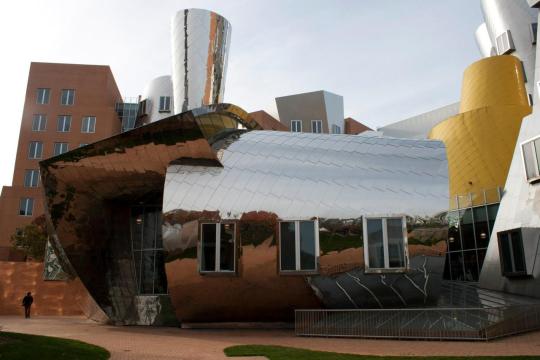
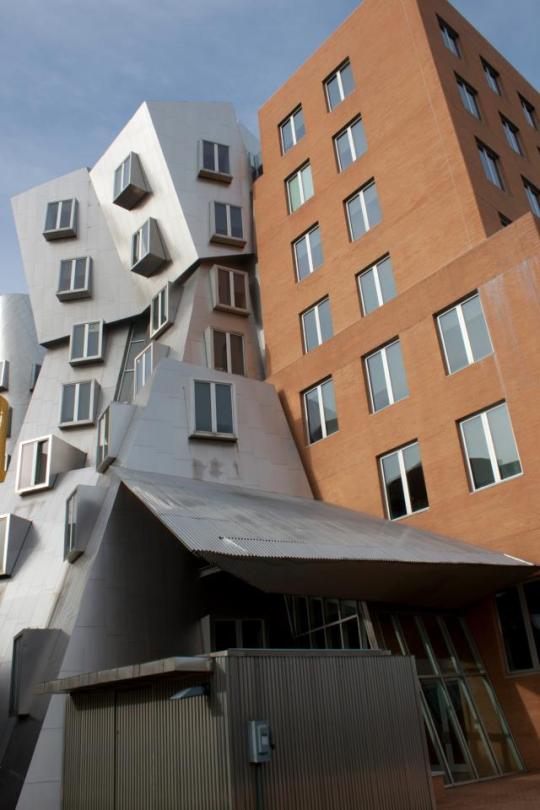
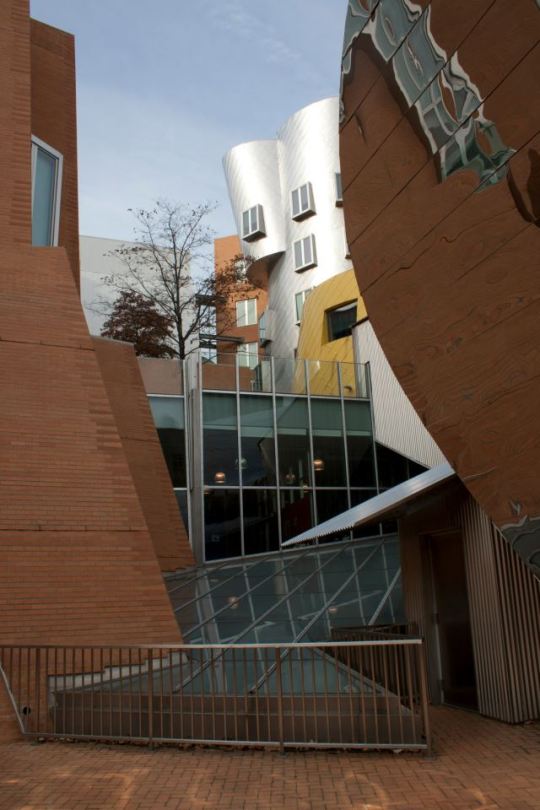
JOURNAL ENTRY 9:
I recently visited the Frank Gehry building at MIT, Boston with a group of architecture students from my class. While I enjoyed the entire trip, probably the highlight was visiting this architectural phenomenon that represents the revolutionary path architecture has been taking. The building by Frank Gehry (pictures above) is known as the Ray and Maria Strata center and encapsulates the brilliant innovational hub that is MIT (Massachusetts Institute of Technology).
In terms of architecture, the work is in a constant state of flux. Every wall has jarring elements as if in a state of deconstruction or falling apart. The unfinished nature of it also adds a visual appeal to the work as if each crevice is a new territory hence there being an element of surprise. Variety in the materials add to the creativity of this building as they include brick, steel and aluminum.
When we took a tour of this building, I personally enjoyed the erratic layout of the building as it allowed for an individualistic experience. However, I also learned that this building had many structural flaws and thus, goes against organized complexity found in nature and emulated by architects such as Le Corbusier.
0 notes
Text
Journal Entry 8: Macro focus on an Indian Photographer
One of my favorite photographers right now is one I discovered recently while stumbling through a Flikr website. The name: Shubh Singh. This Punjabi photographer based in Chandigarh, Haryana, India has a collection that boasts of over 500 photographs that mesmerize the eye with each capture.
One of my favorites is:
http://www.flickr.com/photos/shubh/2966365658/in/set-72157627765156347.
As cameras become more accessible to everyone with their cheap price and high quality, the photographs that result aren't illustrative of a person's talent. Without experience and knowledge of composition, these photographs become just that: photos. While they capture memories, they don't seek to delight.
In this way, Shubh's (the name literally translating to happiness in Hindi) photographs follow the structure of architect's like Le Corbusier where the composition brings the photograph to a focal point inspiring not only in interest but also meaning. For example, in my favorites (above), the five colors overlap making the bird (despite being the foreground) a highlighted aspect of the photograph.
2 notes
·
View notes